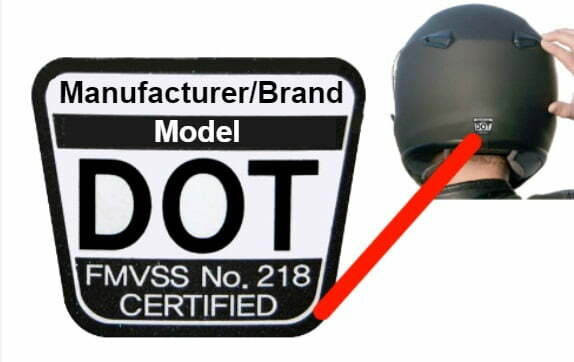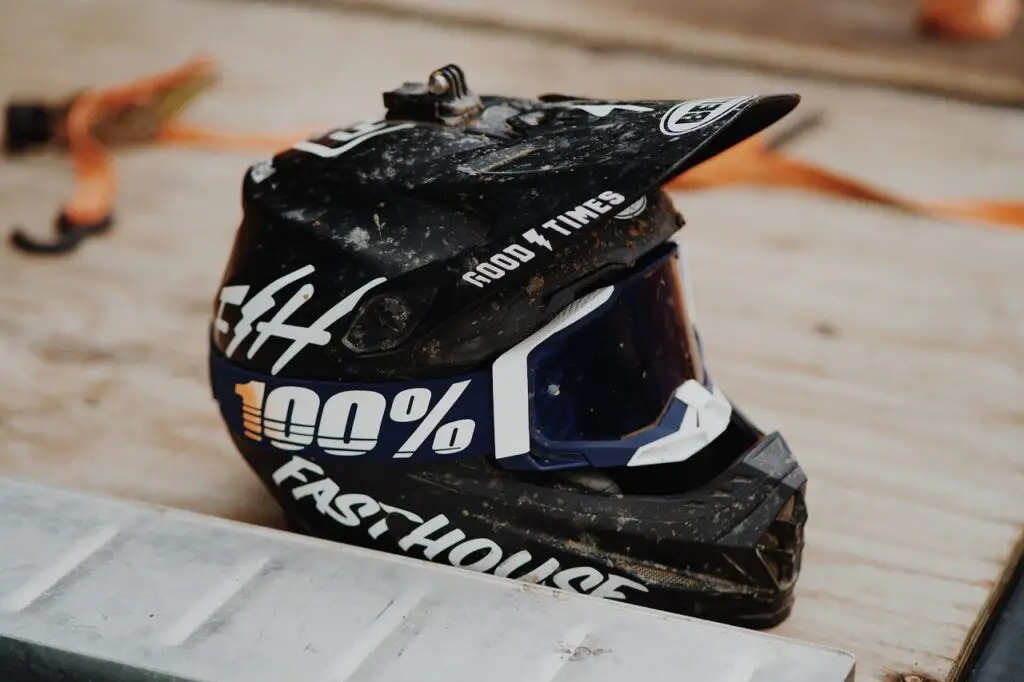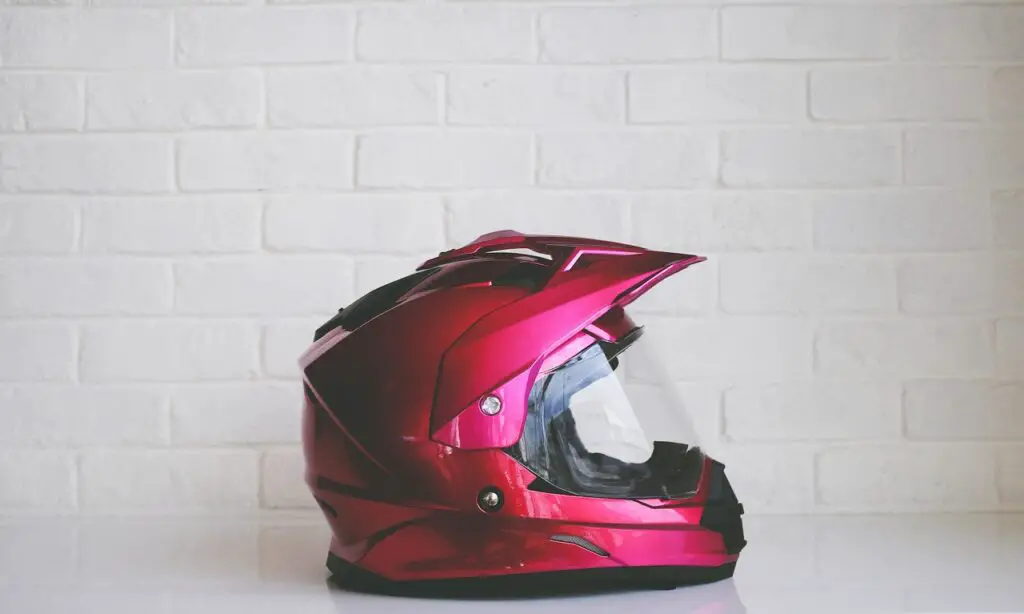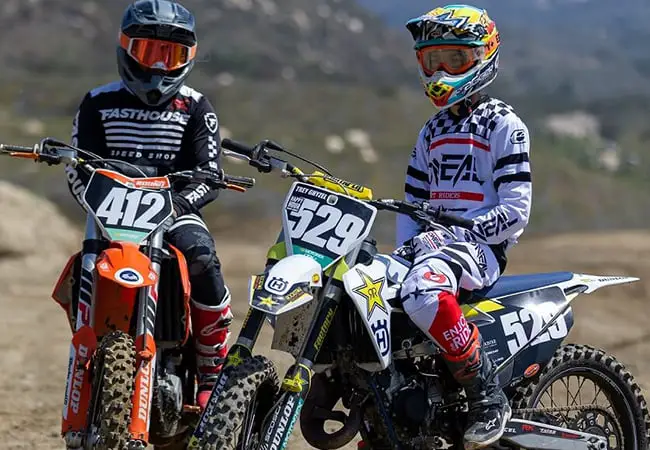Are you a dirt bike rider who loves hitting the trails but also needs to take your bike on the streets to get to your next off-road destination? Then you’ve probably asked yourself, are dirt bike helmets street legal? On that note, are dirt bike helmets even DOT-approved?
To be deemed street legal, dirt bike helmets must comply with safety regulations mandated by the Department of Transportation (DOT). Helmets that meet the minimum DOT requirements display a DOT sticker on the rear or chin side, indicating compliance and suitability for use on public roads.
In this article, we’ll dive into the topic of laws and dirt bike helmets, including what makes a helmet DOT-approved, the differences between dirt bike helmet certifications, and the pros and cons of using a dual sport helmet for both on and off-road riding.
Buckle up, and let’s get started!
Are dirt bike helmets street legal?
Are you thinking about wearing your dirt bike helmet while riding your street bike but worried about getting in trouble with the law?
Well, it depends on the state you’re in. The legality of dirt bike helmets on the streets varies from one state to another.
However, generally speaking, as long as your helmet has the DOT seal of approval, you’re good to go.
DOT standards ensure that the helmet has passed the minimum safety requirements for use on public roads in the US.
So if you see a DOT marking on the helmet, or if you’re buying one that has been manufactured and tested according to DOT standards, then your dirt bike helmet is street legal.
Are dirt bike helmets DOT-approved?
The DOT and NHTSA don’t approve helmets of any type, even dirt bike helmets.
Motorcycle and dirt bike helmets you see on the market have all been self-certified.
That means technically, any manufacturer can stick a DOT symbol sticker on the back and claim that their helmets have been through several tests and have been DOT-approved.
But don’t worry – the NHTSA ensures that most, if not all, of the dirt bike helmets on the market stay true to the Federal Motor Vehicle Safety Standard (FMVSS) No. 218.
They test helmets randomly to determine whether they meet the recommended helmet requirements.
During their selection process, they also consider the public’s feedback, suggestions, and complaints in determining which helmets to use.
DOT vs. ECE vs. Snell certification for motorcycle helmets
When shopping for a dirt bike helmet, you might have come across terms like DOT-approved, ECE-approved, or Snell-certified.
These are the various standards for helmets that we have today, and each has unique features and benefits.
Let’s take a closer look at these different certifications.
Department of Transportation
DOT certification is the legal minimum standard for any helmet type in the US.
The DOT established the Federal Motor Vehicle Safety Standard (FMVSS) No. 218, which sets the requirements for helmet safety.
To be DOT-approved, helmets must undergo several tests to ensure their safety and quality.
These tests include the impact test, where the DOT tests the helmet’s impact resistance and shock absorption by simulating accidents that could lead to damaging impacts, and the penetration test, where a striker is dropped 10 feet above the helmet to see if it can withstand the impact.
They also conduct a retention strap test to check the helmet’s straps and a peripheral vision test to ensure that the helmet can provide a minimum 105-degree view from the midline.
While a DOT-approved helmet is the legal minimum for wearing a dirt bike on the streets, you may also opt for a helmet with stricter standards if you want something that has undergone more rigorous tests.
ECE 22.05 Helmet Standard
If you’re looking for a dirt bike helmet with more international standards, you should consider one with the Economic Commission for Europe (ECE) 22.05 Helmet Standard.
This certification is similar to DOT’s but has a few extra tests to examine the helmet’s durability under different factors, such as exposure to UV lights and solvents. ECE also tests more than one helmet from each production run to ensure consistent quality.
If you find a helmet that has both DOT and ECE stickers, that’s great news – you’ll know that it has passed both sets of tests and is likely to be a high-quality product that can keep your head safe on the road.
Snell certification
The Snell Memorial Foundation M2010 Helmet Standard is one of the most strict helmet safety standards globally.
They conduct rigorous tests to ensure that every helmet can genuinely protect riders during accidents.
Their tests are similar to those of DOT but with additional procedures.
For instance, they strike the helmet on various surfaces during the impact test. They also conduct a roll-off test to see if the helmet will remain on a rider’s head during a crash.
The Snell Foundation takes its business seriously, so if you want to invest in a dirt bike helmet that you can trust to protect you during accidents, opt for a Snell-certified one.
Bonus points if it’s both Snell and DOT-certified!
How to identify a DOT-approved helmet
To ensure that your dirt bike helmet is DOT-approved, you have two options:

- Look for the DOT label or sticker on the helmet’s back, side, or chin bar.
- The label should include the manufacturer/brand, model, DOT, and FMVSS No. 218 CERTIFIED.
- Check the manufacturer’s website for information on the helmet’s safety certifications, weight, materials, and construction.
It’s always a good idea to research and read reviews first before purchasing a dirt bike helmet.
This will give you peace of mind knowing that you’ve chosen a safe and legal helmet for road use.
How is a dirt bike helmet different from a motorcycle helmet?
Dirt bike helmets have different features that provide riders with protection that feels more comfortable and secure, such as a rigid outer shell, padded interior, and chin bar.
Dirt bike helmets also have larger air vents for improved ventilation during off-road rides.
Motorcycle helmets, on the other hand, are specifically designed for high-speed road use with their aerodynamic design, smooth outer shell, and smaller vents.
Some riders also prefer the lighter weight of dirt bike helmets, especially during long rides.
They also have a larger field of view, unlike motorcycles, where peripheral vision is a bit limited due to the aerodynamic build of the helmet.
Is Dual Sport Helmet Good?
Looking for a helmet that can handle both on-road and off-road riding? Consider a DOT-approved dual sport helmet.
These helmets offer the best of both worlds, with features that protect you in various conditions, whether you’re hitting the streets or taking the trails.

Dual sport helmets have thicker padding, an aerodynamic shape, and an outer shell optimized for impact and penetration resistance, providing suitable protection for both on and off-road riding.
They also come with a sun peak and visor that you can modify or remove depending on your riding preference.
If you want to choose a more aerodynamic look or switch to goggles for off-road riding, a dual sport helmet has you covered.
Wrapping up
When choosing a dirt bike helmet for street riding, make sure it meets DOT standards and displays a DOT sticker or label.
For maximum protection, consider a dirt bike helmet with DOT certification and an ECE or Snell stamp.
Alternatively, you opt for a dual sport helmet, which is ideal for off-road and street riding and is fully street legal.
P.S. Just a note that this guide is for general knowledge and is not intended as legal advice.
Please contact your local council for up to date information and advice before making any decisions.



